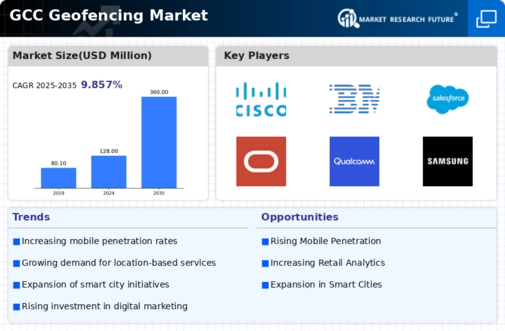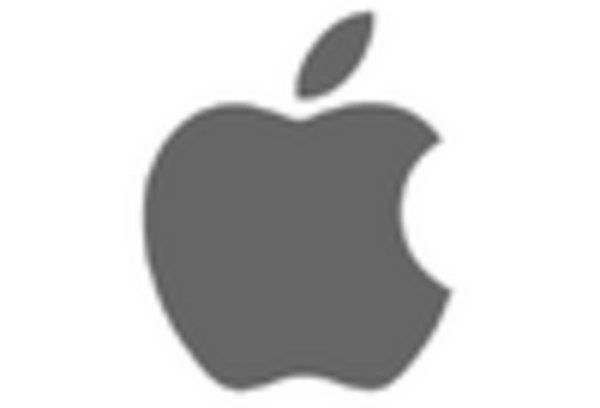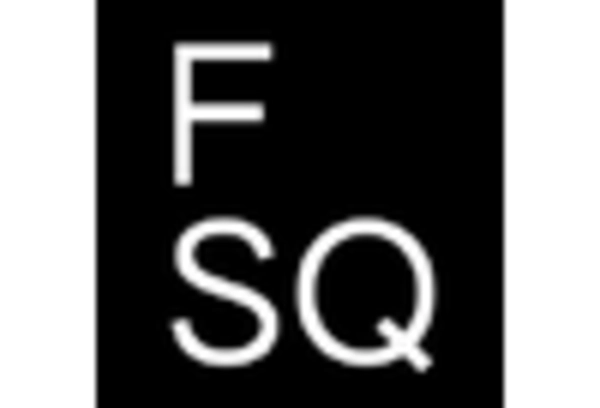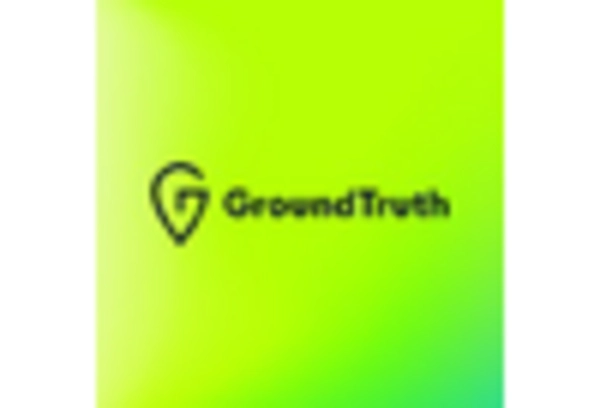Expansion of Mobile Device Usage
The proliferation of mobile devices across the GCC is significantly influencing the geofencing market. With smartphone penetration rates exceeding 90% in several GCC countries, businesses are increasingly adopting geofencing technologies to engage consumers effectively. The ability to track user locations in real-time allows companies to tailor their marketing efforts and improve customer experiences. Furthermore, as mobile applications become more sophisticated, the integration of geofencing capabilities is becoming a standard feature. This trend is expected to contribute to a robust growth trajectory for the geofencing market, with estimates suggesting a potential increase in market size by over $1 billion by 2027.
Integration with E-commerce Platforms
The integration of geofencing technology with e-commerce platforms is emerging as a crucial driver for the geofencing market in the GCC. As online shopping continues to gain traction, retailers are leveraging geofencing to enhance their omnichannel strategies. By combining geofencing with e-commerce, businesses can create seamless shopping experiences that bridge the gap between online and offline channels. For instance, retailers can send notifications to customers about in-store promotions when they are in proximity to a physical location. This integration is expected to foster customer loyalty and increase sales, with estimates suggesting that the e-commerce sector in the GCC could reach $28 billion by 2026, further propelling the geofencing market.
Rising Demand for Location-Based Services
The geofencing market in the GCC is experiencing a notable surge in demand for location-based services. Businesses are increasingly recognizing the value of targeted marketing and customer engagement strategies that leverage geofencing technology. This trend is particularly evident in sectors such as retail and hospitality, where companies are utilizing geofencing to send personalized promotions to customers' mobile devices as they enter specific geographic areas. According to recent estimates, the market for location-based services in the GCC is projected to grow at a CAGR of approximately 25% over the next five years. This growth is likely to drive further investment in geofencing solutions, enhancing the overall landscape of the geofencing market in the region.
Evolving Consumer Behavior and Expectations
The evolving consumer behavior in the GCC is significantly impacting the geofencing market. As consumers become more accustomed to personalized experiences, businesses are compelled to adopt geofencing solutions to meet these expectations. The demand for tailored promotions and location-specific content is driving companies to invest in geofencing technologies. This shift in consumer behavior is particularly pronounced among younger demographics, who are more likely to engage with brands that utilize geofencing for targeted marketing. Consequently, businesses that fail to adapt may risk losing market share. The geofencing market is thus poised for growth, with projections indicating an increase in adoption rates by approximately 30% over the next few years.
Government Initiatives Supporting Smart Cities
Government initiatives aimed at developing smart cities in the GCC are playing a pivotal role in advancing the geofencing market. These initiatives often include the implementation of advanced technologies that facilitate urban planning, traffic management, and public safety. Geofencing technology is being integrated into various smart city applications, enabling real-time monitoring and data collection. For instance, municipalities are utilizing geofencing to manage public transportation systems more efficiently. As governments allocate substantial budgets towards smart city projects, the geofencing market is likely to benefit from increased funding and support, potentially leading to a market growth rate of around 20% annually.

















Leave a Comment